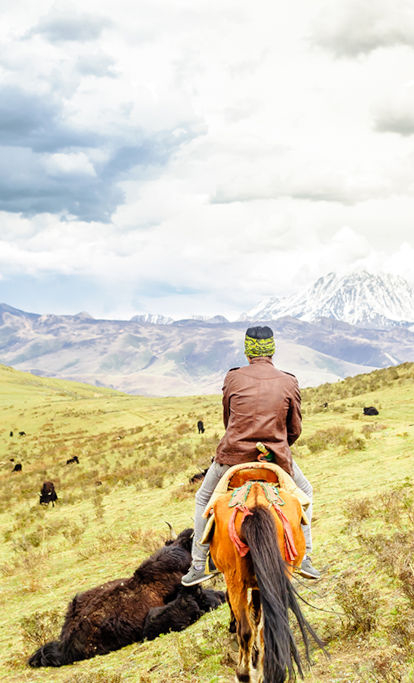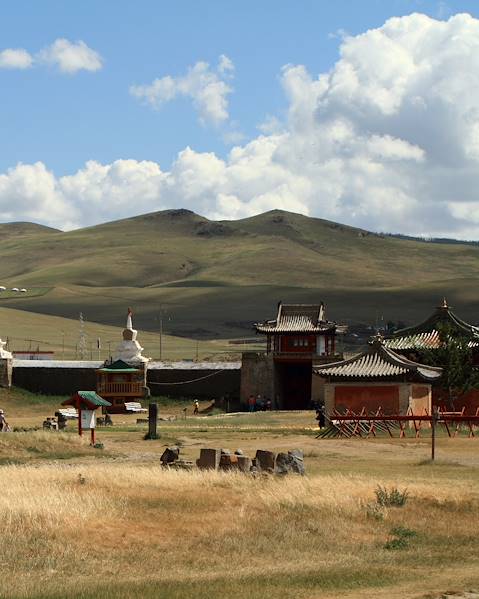When it comes to sunny destinations, Mongolia probably doesn’t spring to mind, but the sweeping nation actually benefits from one of the world’s sunniest climates, with upwards of 250 clear, sunny days per year. Mongolia’s envious climate has even landed it the nickname of the ‘Land of the Eternal Blue Sky’. But don’t be fooled, temperatures can plummet to -40°C in the snowy winter months in the northern Altai Mountains and climb to a sizzling 40°C during the summer in the southern Gobi Desert. Read on to discover the best time to visit Mongolia.
Spring (March-May)
The weather during the spring months can be unpredictable, breathing life into the notion that Mongolia can experience four seasons in a singular day. Some days feel as though the long winter has some unfinished business, while others feel as though the much-loved summer is just around the corner. The first few months of the year are generally the least touristy, but if you come prepared for any weather, spring can be a pleasant time to visit. One of the highlights of the season is the migration of the nomadic herders, who lead their families across the country in search of pastures suitable for raising livestock. The countryside then becomes full of life, as new wildlife is born and beautiful flowers blossom.
Summer (June-August)
Summer in Mongolia is something to behold, and certainly one of the best times to visit. The countryside is bathed in a kaleidoscope of colours, the days are warm and sunny with temperatures averaging 25°C and there are a host of cultural festivals held at this time, including the popular Naadam Festival in July, which celebrates traditional nomadic culture. The only downside is that the summer months are also the rainiest months; however, this does have the benefit of keeping the steppes lush and green and cooling hikers down on particularly sunny days. The summer is the best time to head to Northern Mongolia to enjoy some trekking through the Altai Mountains before the cold weather sets in. The Gobi Desert is another magical destination; but be warned: temperatures can soar to around 40°C at this time of year. Wherever you decide to go, make sure to bring plenty of insect repellent, as the mosquitos are out in full force during the summer.
Autumn (September-November)
The month of September marks the beginning of a period of transition; the climate gradually becomes colder and drier as the winter months close in and the colours of the countryside morph from a vibrant green to an autumnal golden. The skies fill up with a dizzying diversity of birds, making it a great time to explore Mongolia’s many parks, such as the Gorkhi-Terelj National Park, near the capital, and Hustai National Park, one of the best places for budding wildlife photographers. This is also a great time to head to Western Mongolia to witness the spectacle of the Golden Eagle Festival in Altai, which sees talented eagle hunters showcase their ancient culture. The festival ceremonially marks the kickoff of the eagle hunting season, which takes place throughout the following winter months in the nearby mountains.
Winter (December-February)
Winter in Mongolia is not for the faint-hearted. Temperatures hover around a Baltic -20°C but can drop as low as -40°C in the northern regions. If you are hellbent on travelling to Mongolia in the winter, then February is the best time to go, as the weather is slightly warmer, with highs of around… -14°C. Ulaanbaatar - which holds the record as the world’s coldest capital city - is a great winter base, as well as the perfect place to stock up on some warm, cashmere clothing (Mongolia produces a third of the world’s cashmere). And, it must be said that, while visiting in the coldest months takes some extra planning, those willing to brave the weather can experience a true winter wonderland: there is dog sledding on Khovsgol lake, snow leopard watching in the Gobi Altai High Mountain area and an annual Ice Festival on Khuvsgul Lake.















